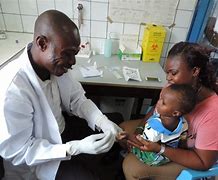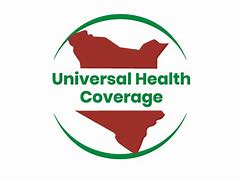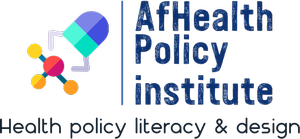Gum Disease
(Periodontal Disease)
by Dr Fils Onokoko Djulu, DDS, Dental Surgeon
Gum disease is widespread and affects billions of people around the world. This is a common problem in adults and children. It is an infectious disease, caused by the presence of bacteria responsible for inflammation of the tissues that surround and support the teeth. The essential role of the gums is to support the teeth in place. It therefore covers the roots and protects them against bacteria and aggression.
- CAUSES OF GUM DISEASE
The main cause of gum disease is plaque due to poor oral hygiene. Gum disease always starts with the accumulation of bacteria in the gums that causes an infection. These bacteria when they encounter food form what is known as dental plaque. When put together, plaque or biofilm is formed. Plaque is invisible at first, then as it grows, it appears to the naked eye as a sticky, yellowish-white layer that is deposited on the surface of the teeth. At this stage, rinsing the mouth with water cannot remove this plaque, only brushing which can disorganize and eliminate the plaque.
Bacterial plaque is essentially composed of bacteria, salivary proteins and some food debris of toxins secreted by bacteria. So, when this dental plaque accumulates, it ends up hardening following the incorporation of mineral salts from saliva and calcifies to form what is called dental tartar. The latter is a calcification of existing plaque deposits on the teeth or any other solid surfaces in the mouth.
Plaque causes swelling, an infection of the gums commonly known as gingivitis, and over time this sometimes progresses to periodontitis, i.e. the destruction of the supporting tissues of the teeth. Since dental plaque is the factor that determines periodontal disease, there are some general and local factors that aggravate this disease. These factors include:
Tobacco: Other causes that promote responsible gum disease, especially smoking. In fact, the nicotine consumption contained in tobacco leads to the destruction of the supporting tissues of the teeth due to a decrease in the supply of oxygen and nutrients to the mouth. In the gums. In addition, smoking decreases the immune response to fight infections. Nicotine, the tar contained in tobacco smoke, is also deposited on the surface of the teeth, aggravating the inflammation of the gums. When tobacco use is combined with alcohol, the risk of gum disease is even higher. Cannabis also promotes gum disease.
- Diabetes: In addition, diabetes is one of the causes of periodontal disease. People with diabetes should pay special attention to their oral hygiene, as they are more prone to periodontitis, infectious diseases where the inflammatory response destroys the tissues that support the teeth. Periodontal disease is considered the sixth complication of diabetes. One in two diabetic patients has periodontal disease.
- These complications are closely related to diabetes, as they are both "causes and effects" of one of the most important aspects of diabetes. Decreased saliva production, sweeter saliva, unbalanced bacterial flora and decreased resistance to microbial infections, make people with diabetes more vulnerable to oral infections.
- On the other hand, inflammation in the gums or caused by infection increases insulin resistance, making it more difficult to balance blood sugar. So, people with a fragile immune system are also more likely to develop gum disease.
- Medications: Taking certain medications such as contraceptives, stress and hormonal changes, or menopause also contribute to gum disease. In pregnant women, periodontal disease significantly increases the risk of preterm birth, and low birth weight is one of the most common causes of perinatal death.
- Other causes: Local factors, in particular: dental malposition, narrow interdental space, furcations, coronary fillings or ill-fitting dental prosthetic crowns, gum injuries due to overly aggressive brushing promote mechanical retention and therefore the accumulation of dental plaque responsible for (gingival) gum diseases.
2. DIFFERENT PERIODONTAL GUM DISEASES
GINGIVITIS: is an inflammation of the gums caused by the deposition of bacteria at the neck of the tooth. It most often results in redness, bleeding when brushing, swollen gums and the gums become sensitive to probing. Gingivitis is reversible with proper treatment, and this is enough to achieve gum healing. Gingivitis is very common and is the most common gum disease. It affects nearly 99% of the world's population. It also affects children and adolescent girls.
Regular and thorough brushing of the teeth goes a long way in preventing gum disease. Also scaling will be mandatory to remove the scale. Bleeding gums are likely to heal after three days, a week, or two weeks of careful brushing.
Brushing should be regular and done at least twice a day for two to three minutes to 5 minutes. Brushing disturbs the local anaerobic climate and the resident flora recovers. Regular dental visits, i.e. at least once a year for check-ups and cleanings and examinations, are essential elements for good oral health and are therefore a better removal of plaque and gum disease.
PARODONTITIS: is a deep inflammation of the gums and bone that supports the tooth, leading to the proliferation of germs along the tooth root. It is another and most advanced form of gum disease. It is characterized by bleeding gums, bad breath, tooth mobility, receding and retracting gums. In addition, bacteria can migrate, through the inflamed gums, into the circulation and cause distant complications, such as: diabetes, heart, kidney, liver disease, memory loss, etc. Similarly, inflammation of the gums does not remain localized and can impact the entire body. Of note, periodontitis is responsible for tooth loss.
When the gums progress to periodontitis, treatment becomes much more complicated. Only the dentist can treat periodontitis by:
- Tips on oral hygiene;
- Scaling and root planning (depending on the rate of tartar build-up and risk factors for periodontal disease);
- Visits to the dentist for a dental check-up every six months. An in-depth examination is carried out: mucous membrane, periodontium, teeth, salivary flows, to detect possible lesions of the teeth and gums at an early stage;
- Management/treatment of periodontitis will depend on the severity of the infection (diseases).
Brushing should be regular and done at least twice a day for two to three minutes to 5 minutes. Brushing disturbs the local anaerobic climate and the resident flora recovers. Regular dental visits, i.e. at least once a year for check-ups and cleanings and examinations, are essential elements for good oral health and are therefore a better removal of plaque and gum disease.
PARODONTITIS: is a deep inflammation of the gums and bone that supports the tooth, leading to the proliferation of germs along the tooth root. It is another and most advanced form of gum disease. It is characterized by bleeding gums, bad breath, tooth mobility, receding and retracting gums. In addition, bacteria can migrate, through the inflamed gums, into the circulation and cause distant complications, such as: diabetes, heart, kidney, liver disease, memory loss, etc. Similarly, inflammation of the gums does not remain localized and can impact the entire body. Of note, periodontitis is responsible for tooth loss. When the gums progress to periodontitis, treatment becomes much more complicated. Only the dentist can treat periodontitis by:
- Tips on oral hygiene;
- Scaling and root planning (depending on the rate of tartar build-up and risk factors for periodontal disease);
- Visits to the dentist for a dental checkup every six months. An in-depth examination is carried out: mucous membrane, periodontium, teeth, salivary flows, to detect possible lesions of the teeth and gums at an early stage;
- Management/treatment of periodontitis will depend on the severity of the infection (diseases).
3. PREVENTIVE TREATMENT OF GUM DISEASE
The best prevention of gum disease is rigorous hygiene and regular visits to the dentist; Brush your teeth well after each meal twice a day with a soft toothbrush so as not to further damage the gums. Brush for at least two to three minutes;
Brush with the right technique (vertical); Use a soothing, non-abrasive toothpaste. Some dental pastes are recommended for sensitive gums as well as gum disease treatments;
Use dental floss/toothpick. Interdental brushes; Flossing removes plaque from between the teeth. Water propellers can also be used for deep cleaning;
Apply a specific gel; An antiseptic gel can be used topically to help calm the inflammation of the gums;
Rinse your mouth. Use an antiseptic mouthwash two to three times a day after each brushing; Do not exceed ten days of treatment without medical advice;
It depends on the mouthwash used; Chlorhexidine-based mouthwashes are not recommended for long-term use.
REFERENCES
- Can children contact one of the gums: www.cliniquedentairealainquinn.com, June 1, 2022. Dr. Alain Quinn.
- Periodontal diseases: how to diagnose and treat them? www.smileparter.fr, July 27, 2022.
- Articles written by Marion Michelet and checked by Dr. Jana Bacharova, dental surgeon at the El cedro Tenerife clinic.
- Understanding Gum Disease: www.amili.fr, July 6, 2023. Identify early signs of gum disease: www.sunstargun.com, January 27, 2023.
- Periodontal disease: Dental Aid Africa Foundation. By Dr. Tom Van der Colk, dentist-ocupuncturist Kigali, 13 December 2004.
- Complications of teeth and gums: www.federationdes diabétiques.org
- Periodontal disease: www.americanhospital.org, February 12, 2020. 8. Tips: Gingivite-automédicationlasanté.net
AUTHOR CONTACT
Dr. Fils ONOKOKO DJULU, DDS, Dental Surgeon ;
Phone : +243982133064
Email : fistononokoko2019@gmail.com
Adress : Av. Dei Q-OUA/Basoko C/Ngaliema, concession Procoki
Democratic Republic of Congo



